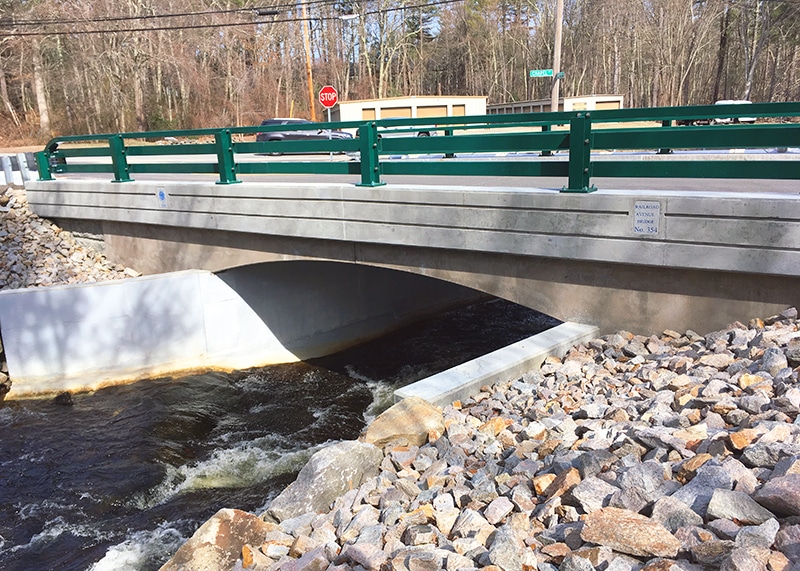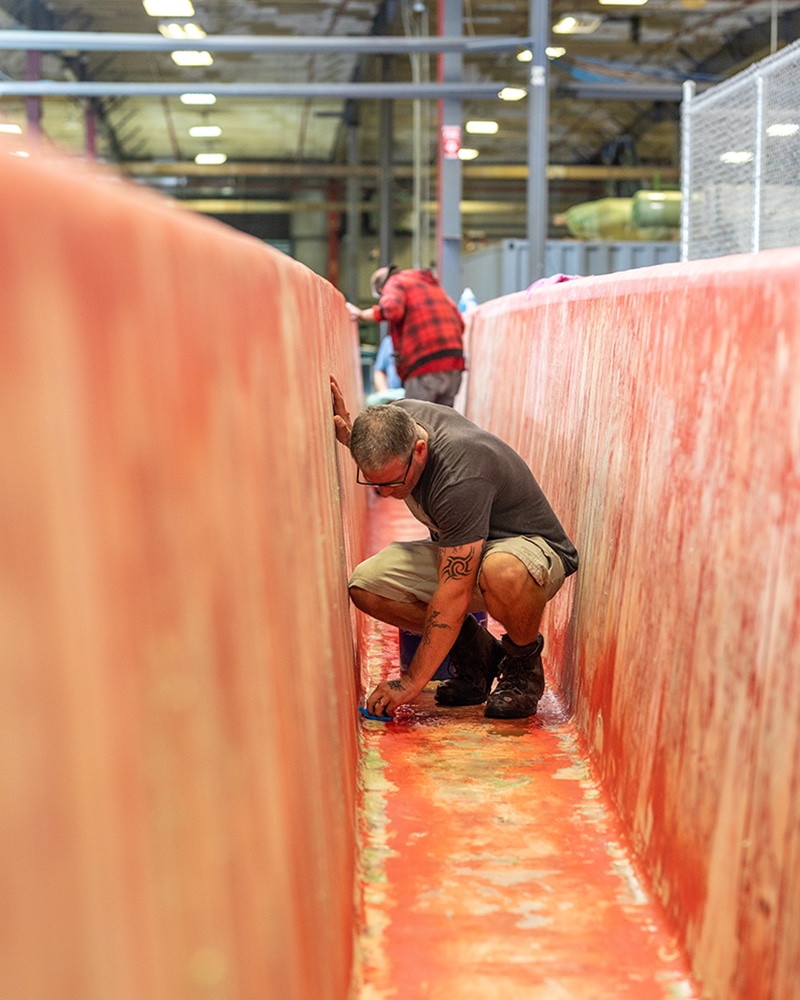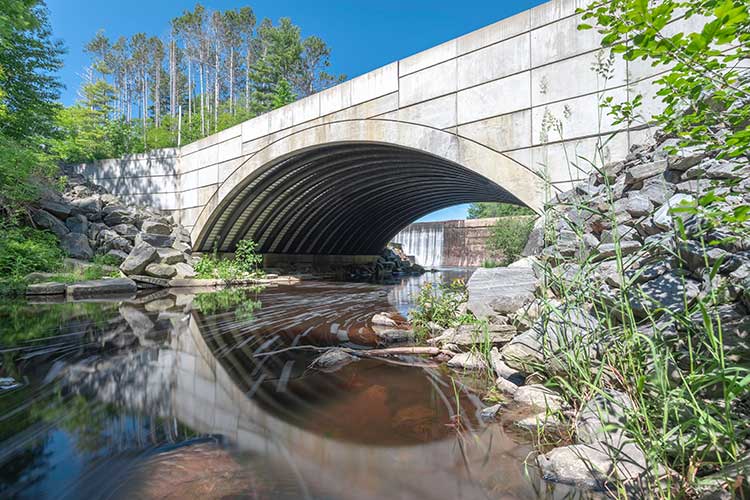America’s crumbling infrastructure is a big problem, which is why, in April 2019, Congress and the Trump administration agreed to spend $2 trillion to fix it—although the two sides remain stalemated over how to move forward, according to The Wall Street Journal.
Still, it’s increasingly obvious to many that America’s ports, roads and airports need updating. Unfortunately, according to AIT Bridges Senior Design Engineer Timothy Kenerson, this state of disrepair is especially bleak when it comes to our nation’s bridges.
“The national bridge inventory in the U.S. is about 615,000 bridges,” Kenerson said. “Roughly 62,000 bridges in the U.S. are no longer capable of carrying legal loads. Then, keep in mind the average age of the bridge in our infrastructure is 40-45 years old. That number is only going to be increasing every year.”
One solution to this growing problem is the construction of new bridges. And at AIT, the company has hit upon a particularly ingenious method for doing just that.
Modular construction
While AIT’s projects have, to this point, been on a smaller scale, Kenerson’s research through the University of Maine shows that composite bridge technology is a scalable solution that could help create stronger, longer lasting bridges throughout the United States in construction projects both large and small.
Kenerson studied at the University of Maine’s civil engineering program and worked at school’s Advanced Structures and Composites Center, a world-renowned testing facility.

At the lab, Kenerson worked on a project funded by the U.S. Army Corps of Engineers to develop a rapidly deployable, inflatable bridge system that could be deployed with army units. “The concept was to create something that was light weight, low logistics, easy to transport and easy to make in a remote location,” Kenerson said. “Through the research at the university we realized that this wasn’t just something that had military implications and applications but could be used for our civil infrastructure here nationally.”
Thus, AIT Bridges was formed.
The advantages of AIT’s modular construction system over traditional bridge construction methods starts with the materials, which Kenerson worked to develop during his time at the ASCC.
“The primary advantage to fiber-reinforced polymers is that they’re durable,” Kenerson said. “They have a resilience to chemicals and environment, and they’re also fatigue resistant. Which is a really big property when you’re talking about civil infrastructure, something that’s going to be subject to repetitive and increasing loads as we’ve seen over time.”
In a bridge built of fiber reinforced polymers, there are no elements like steel that might corrode. “There are bridges in the U.S. where they essentially paint the bridge every year,” Kenerson said. “They start at one end and work their way to another end, and then next year they go back and do the same thing over again.”
Low-maintenance bridges
This lack of corrosion and high level of resilience means that AIT’s bridges remain low maintenance over an exceptionally long period of time. Then there’s the question of replacement.
“While they were designed to last 50-75 years, we’re seeing that a lot of those bridges are aging out earlier than expected in the 40- to 50-year range,” Kenerson said. “Right now, I’d say the average age of a bridge in the United States is about 43 years old. They’re not getting any younger. And that’s where we come in. We try and provide a product that is competitive upfront in cost but when you look at the full design life of our structures, then it becomes a clear advantage. You’re not going to have to touch this piece of infrastructure again for the next 100-125 years.”

For something that lasts 100 years, AIT bridges go up fast—fast enough, in fact, that they’re able to complete projects that would otherwise have been spread across multiple construction seasons into one.
Take a recently completed bridge AIT built in Edmunds Township, Maine. The originally proposed structure was a precast concrete arch, which would have been built through stage construction over a two-year period, due to the way that the existing bridge structured impeded the footprint of the new bridge. Instead of building two conventional arches, AIT was able to design a skewed arch using a trapezoidal structure, dramatically reducing the width of the finished bridge.
“We just set the arches in line with the roadway, and skew the structure and abutments,” Kenerson said. “It saves a lot of area, reduces the environmental impact and, in this case, reduced it from a two-year to a one-year project where the component of the bridge we constructed was a third of the cost of the original option.”
“There’s a big push in our industry for accelerated bridge construction,” Kenerson said. “So, at AIT, a lot of the pre-fabrication project delivery is done before the project ever comes to the site. You build as much as you can off-site and reduce your construction timeframe. We are going to do a project with our girder that has a pre-cast deck system. With relatively simple geometries, you can have everything pre-cast off site, prior to building the structure, which means you have to do a reduced road closure, reducing our disruption to the public. That’s particularly important for states like Maine, where our construction season is limited to four, five, six months at best.”
Accelerated construction methods, more durable bridges, as well as lighter weight materials leading to a reduction in fuel and transport costs means AIT is able to produce the bridges our nation so desperately needs in an innovative and cost-effective manner.
“Doing the same thing over and over again and expecting different results is the definition of insanity,” Kenerson said. “We’ve been doing the same thing in infrastructure for a number of decades and we’re getting the same results. We need to innovate with the materials that we use and the design methods we use. Really, that’s what our company is all about. Providing a high level of customer service and listening to our clients to see how we can improve, see how we can make it better. And really taking those things to heart to try and make the best product that we can bring to the market.”











